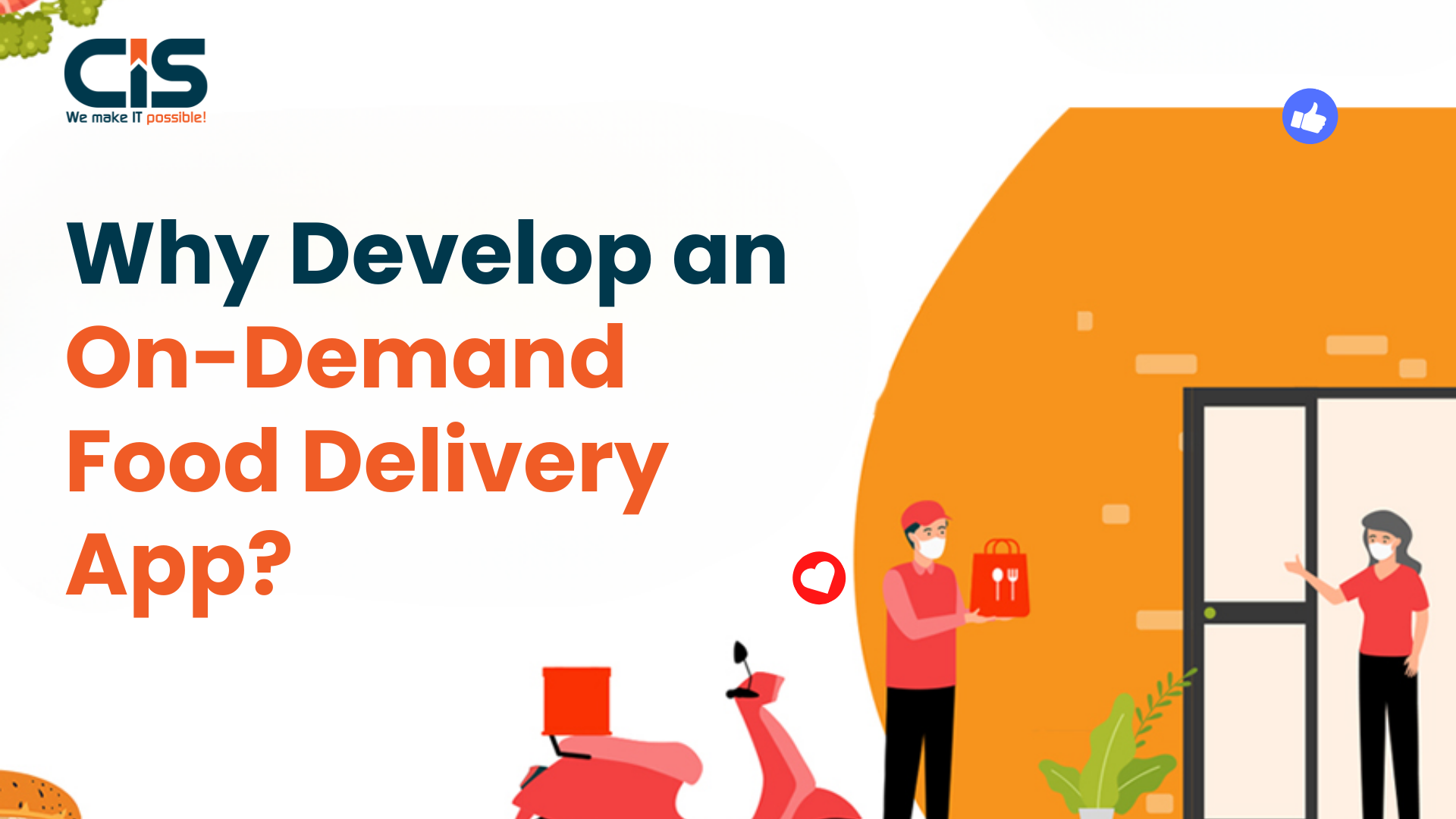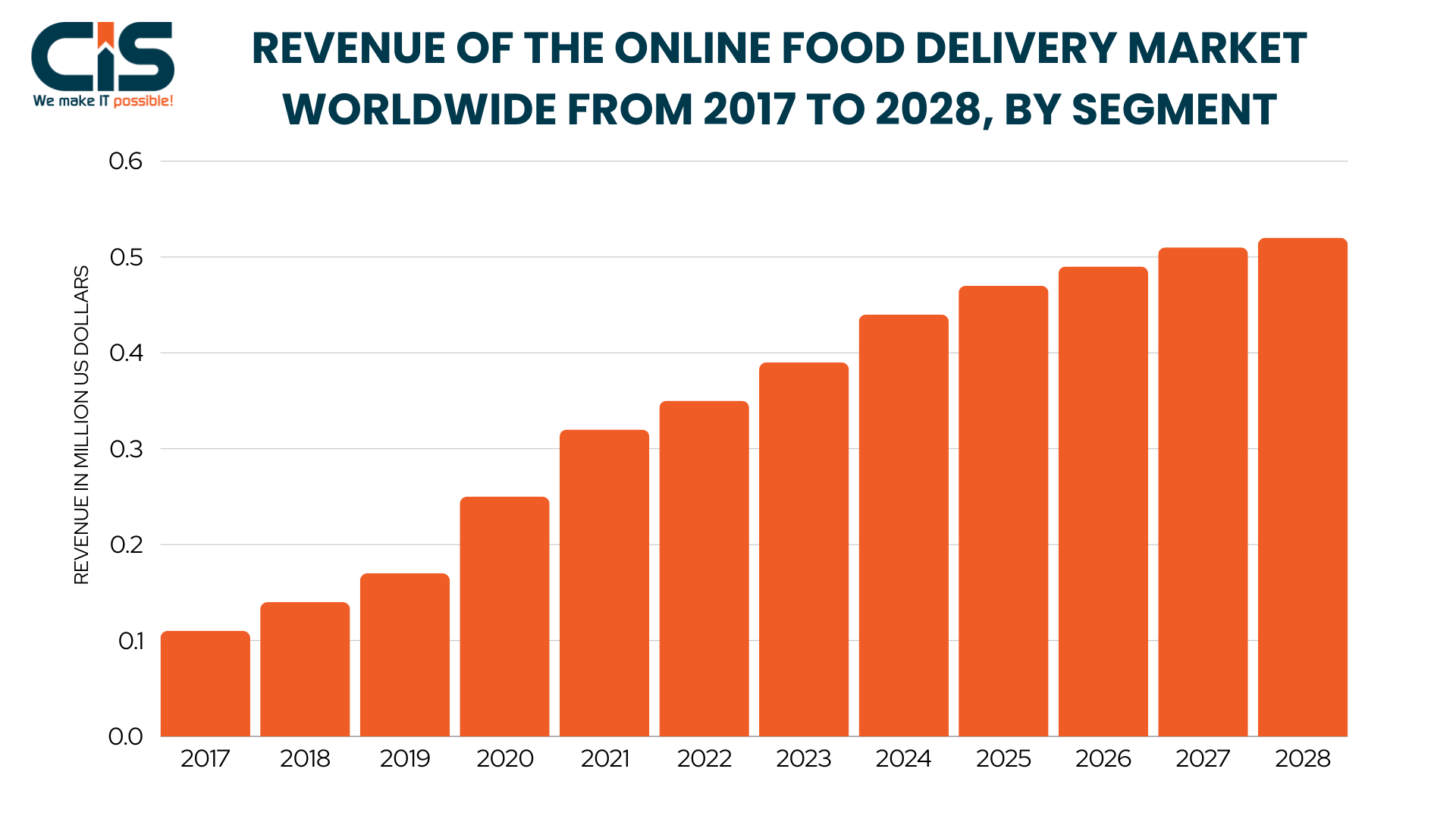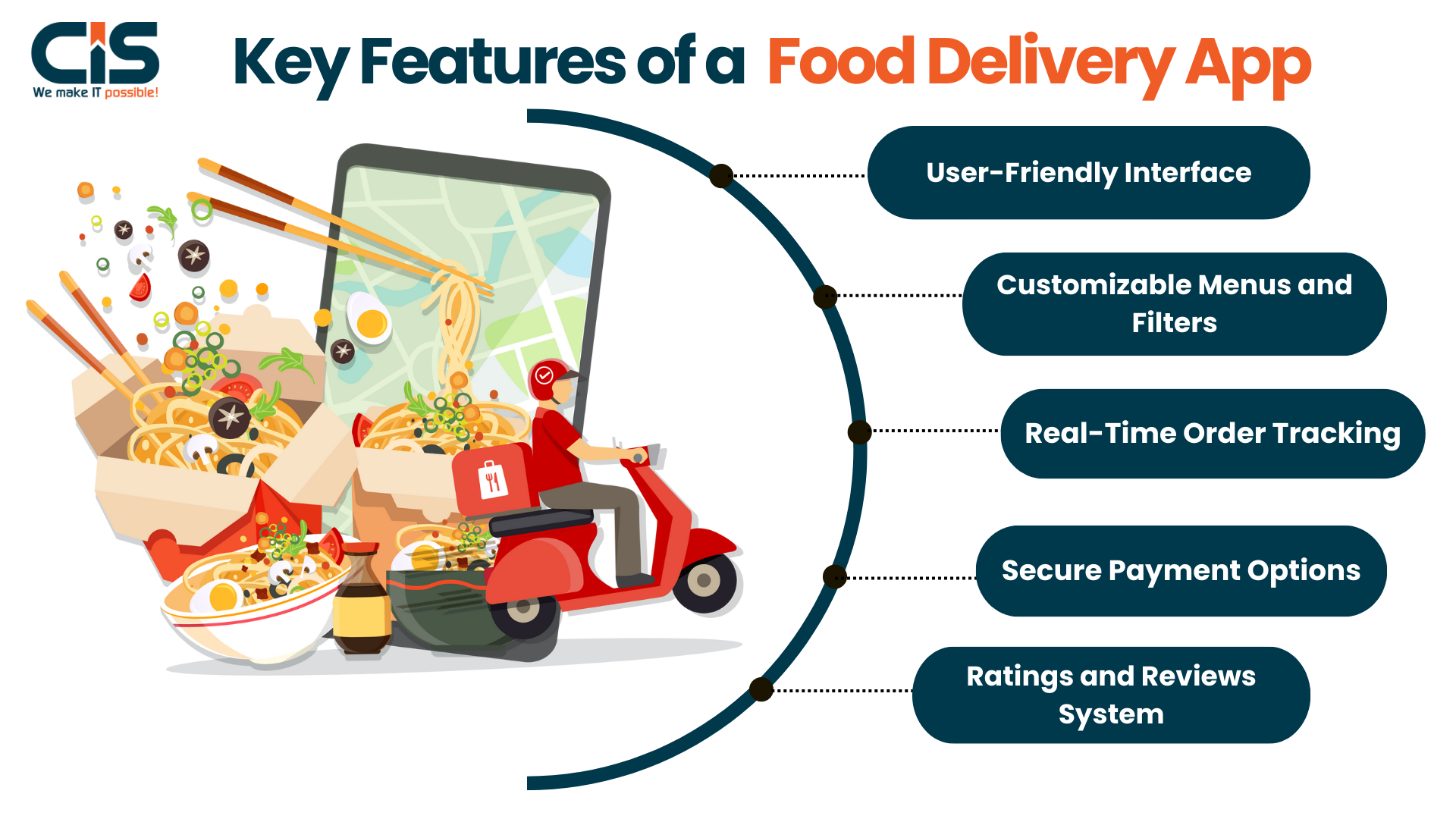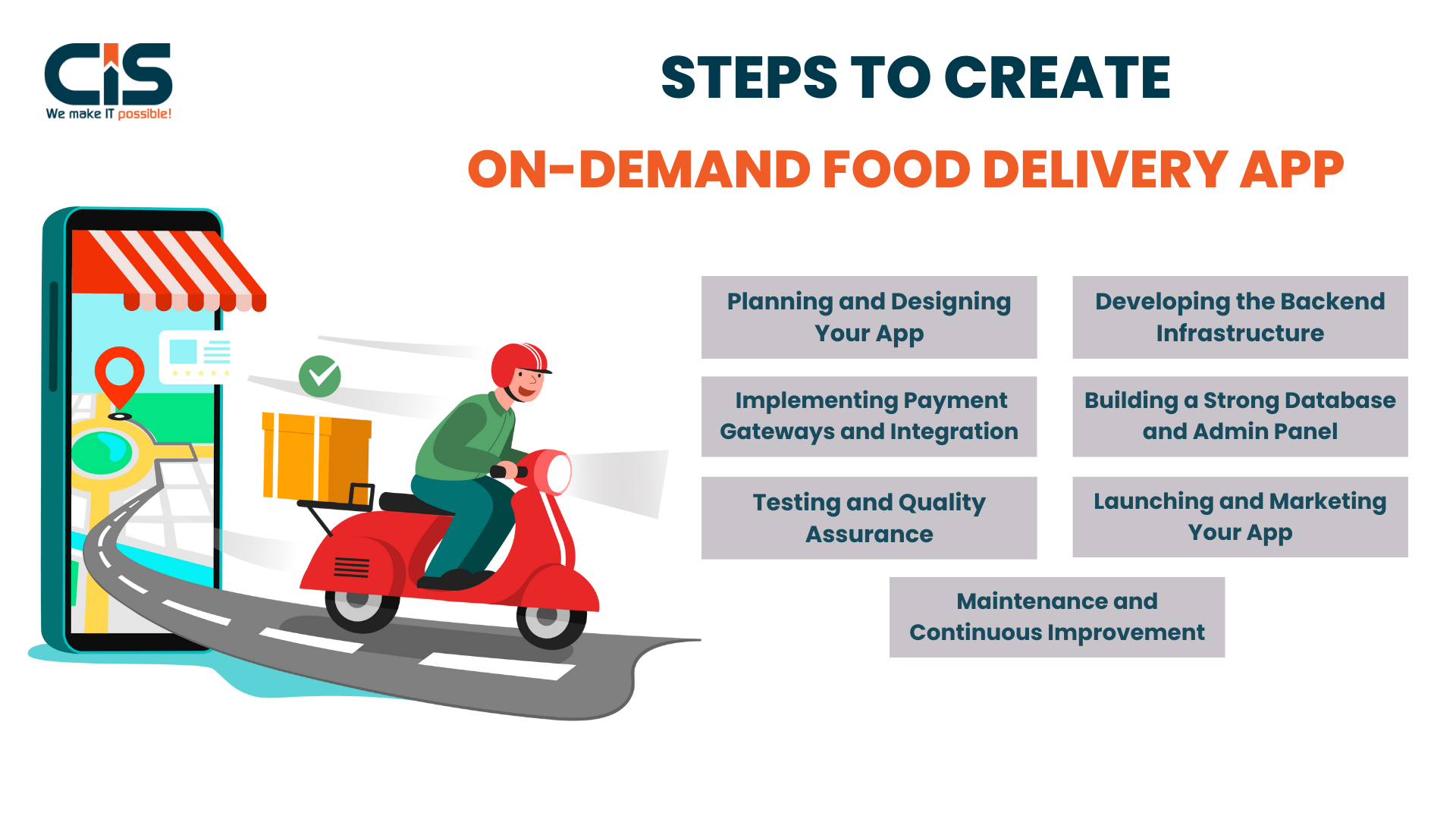Today, the food delivery market has become one of the most popular in the last few years due to the advancement of on-demand food delivery application development. Taking into consideration the modern trends and tendencies regarding the use of portable devices and the comfort they provide consumers with.
Consumers are now able to order their preferred meals at the convenience of their own homes or places of employment. Their need to place a phone call or look for actual menus to use is inapplicable since the food delivery application taps into their desire for what they want to eat.
As reported by Statista on the growth of market value of the online food delivery industry, the value is expected to be about $151 billion by now. 5 billion by 2023. This growth is due to upgraded feature phones whereby many people own smartphones, changes in customer preferences, and willingness to order online.
Indeed, such an opportunity to be successful is tempting, and that is why more and more business owners strive to enter the on-demand food delivery solution app development market. But, for developing a successful food delivery app, there is a need to devise the proper planning and thinking and then implement each and every plan meticulously.
Here is the ultimate step by step guide on how to develop an on-demand food delivery app and what aspects you need to think about. Starting with market and competition analysis and concluding with interface design and your app's visibility, this guide is all that you need.
Thus, no matter if you are an experienced businessman aiming at expanding your small yet successful business or a student who created an on demand food ordering app, read on to find out more about the ultimate guide on food delivery app development and explore the ways to make this business profitable.
Understanding the Current Market: The Growing Popularity of Food Delivery Apps
The food industry is experiencing rapid growth, with on-demand food delivery apps playing a significant role in its expansion. Here are some key statistics that highlight the popularity of this industry:
- In 2024, the online food delivery business is expected to generate US$1.20 trillion in revenue, according to Statista.
- More than 60% of US consumers order food online at least once a week, based on research conducted by the NPD Group.
- The COVID-19 pandemic has further accelerated the growth of food ordering app development, with a significant increase in app downloads and orders placed through these platforms.
So why are on-demand food delivery apps so popular? Here are some benefits that have contributed to their success among consumers and restaurants:
- Convenience: Food delivery apps offer consumers the convenience of ordering their favorite meals from a wide selection of restaurants, all from the comfort of their homes or offices.
- Time-saving: By eliminating the need to search for menus or make phone calls, food delivery apps save customers valuable time.
- Increased restaurant visibility: Restaurant owners that partner with food delivery apps have the opportunity to reach a larger customer base, expand their reach, and increase sales.
- Cost-effective: Some food delivery apps offer exclusive discounts and promotions that make ordering through their platforms more affordable for customers.
Read More: Maximize Takeaway Orders with Online Food Ordering: How Much Can You Save?
On-Demand Food Delivery App Development: Why Do You Need It?

- The Potential to Flourish in the Future
With the increasing popularity of on-demand food delivery apps, there is tremendous potential for your app to flourish in the future. Statista projects that the online meal delivery sector would bring in 1.8 trillion dollars in sales by 2028. This growth is driven by changing consumer delivery preferences and the convenience offered by these apps.

- Setting up Virtual Kitchens
On-demand food delivery app development allows you to tap into the trend of virtual kitchens. These are commercial kitchens that operate solely for the purpose of fulfilling orders placed through food delivery apps. By setting up virtual kitchens, you can reduce overhead delivery costs and focus on delivering quality food to your customers.
- More Customer Retention
Food delivery apps provide an efficient way to retain customers. By offering personalized recommendations, loyalty programs, and seamless ordering experiences, you can build a loyal customer base. Additionally, with the ability to track deliveries and receive real-time updates, customers are more likely to choose your app over others.
- Resolving Location Constraints
An on-demand app for food delivery allows you to overcome location constraints. Customers can order from any restaurant within your delivery radius, opening up a world of culinary options for them. This makes the app appealing to customers who might not have easy access to certain restaurants or cuisines in their area.
Why Investing In an On-Demand Food Delivery App Development is a Profitable Business Idea?
The on-demand food delivery app development industry is a booming business opportunity with significant potential for growth. According to Statista, the market for food delivery apps is expected to reach a value of $151.5 billion by 2023. Here are some reasons why investing in on-demand delivery app development company is a profitable business idea:
- Changing consumer preferences: With busy schedules and a desire for convenience, consumers are increasingly turning to food delivery apps for their meals.
- Improved accessibility: On-demand food delivery apps allow users to order from a variety of restaurants within their delivery radius, providing them with a wide range of culinary options.
- Cost-effective operations: By setting up virtual kitchens, food businesses can reduce overhead costs and focus on delivering quality food to their customers.
- Enhanced customer retention: Personalized recommendations, loyalty programs, and seamless ordering experiences offered by food delivery apps help build customer loyalty.
Key Features of a Successful Food Delivery App

- User-Friendly Interface: A seamless and intuitive UI ensures easy navigation and enhances the overall user experience.
- Customizable Menus and Filters: Allow users to personalize their food preferences, dietary restrictions, and filter options for a tailored dining experience.
- Real-Time Order Tracking: Keep users informed about the status of their orders, providing transparency and reducing anxiety.
- Secure Payment Options: Integration with trusted payment gateways ensures secure transactions, offering flexibility with various payment methods.
- Ratings and Reviews System: Provide users with the ability to rate and review restaurants and delivery experiences, helping others make informed decisions.
- Push Notifications and Customer Support: Send instant notifications about order updates and promotions, and offer responsive customer support through app chat or call.
Steps to Develop an On-demand Food Delivery Application

Planning and Designing Your App
When it comes to on-demand food delivery app development, proper planning and designing are crucial to ensure a successful outcome. Here are the steps you need to follow:
- Identify your target audience and market niche: Determine who your ideal customers are and what specific market segment you want to cater to. This will help you tailor your app's essential features and marketing efforts accordingly.
- Conduct market research to assess competition: Analyze existing players in the food delivery app market to understand their strengths, weaknesses, and unique selling points. Identify areas where you can differentiate and offer a better experience for users.
- Create wireframes and prototypes for your app's UI/UX: Visualize the layout and flow of your app through wireframes and prototypes. This step allows you to test and refine your app's user interface and user experience before moving on to development.
- Collaborate with designers and developers to bring your vision to life: Work closely with a team of experienced designers and developers to transform your wireframes and prototypes into a fully functional app. Ensure effective communication and regular feedback to align your app's development with your vision.
Developing the Backend Infrastructure
Choosing a tech stack that is right for your application:
This means that the selection of technology appropriate for use in on-demand food delivery app development is good for the app is crucial. Here are some factors to consider:
- Scalability: Select the technology stack that allows accommodating a high number of users and orders. Consider using cloud-based solutions like Amazon Web Services (AWS) or Google Cloud Platform (GCP) for scalability.
- Efficiency: Select technologies that enable the pop order placement tracking and delivery process in the shortest delivery time possible. Use frameworks like Node. Js or Ruby on Rails for a backend to improve performance if needed, however, the main development will still be in React.
- Integration capabilities: Your app should be easily integrated with many third parties, such as payment gateways, navigation, and message notifications. Select a technology stack with compatibility as a strong feature when it comes to integrating with these services.
Adding crucial functionalities:
Thus, to deliver a kind of food that clients will be eager to purchase, your application should have several characteristics. Consider including the following features:
- Order Management: Allow users to be able to place, track and manage their orders in a very easy and simple way. Launch tools such as order history, real-time tracking, and modification of the order placed.
- Analytics: Integrate the use of analytical tools to enable the tracking of users' behavior, most often ordered foods, and delivery trends. Utilize this information to enhance elements in your application and marketing plans.
- Inventory Management: Ensure that there is real-time stock control and that what you have physically should tally with that which is on the App. Features that alert restaurants that specific inventory is running low were to be incorporated.
Implementing robust security measures:
Privacy protection of the app users is a crucial aspect in the formulation of any app. Here are some measures to protect user data:
- Secure Socket Layer (SSL): There is a need to use SSL certificates in order to enhance the security of data transfer between the app and the server.
- Two-Factor Authentication (2FA): Two of the improvements involve Second Factor Authentication, which will prompt users for an additional code to log in.
- Secure Payment Gateways: Ensure that a secure means of payment is implemented by adopting reliable payment gateways to protect the customers' material, for example, finances.
Implementing Payment Gateways and Integration
Integrating payment gateways into your on-demand food delivery app is crucial for providing seamless and secure transactions for users. Let's take a closer look at how you can optimize this development process:
- Choose popular payment gateways: Integrating widely used payment integration like PayPal or Stripe ensures that users can make payments conveniently and securely. These gateways have proven track records, offering robust security measures and user-friendly interfaces.
- Ensure secure transactions: To ensure secure transactions, implement SSL certificates to encrypt data transmissions between the app and the server. This encryption guarantees that user information, such as payment details, remains confidential and protected from potential threats.
- Consider multiple payment options: To cater to diverse user preferences, consider incorporating various payment options. Apart from traditional methods like Cash on Delivery (COD), explore digital wallets and in-app wallet systems. Offering multiple options allows users to choose the method that suits them best, enhancing convenience and user satisfaction.
- Streamline payment processes: Integrate the payment gateway APIs seamlessly into your app's checkout system. This integration should be user-friendly and smooth, enabling users to complete transactions easily and without any friction.
Also Read: Food Delivery Apps for Small Businesses: Worth the Investment?
Building a Strong Database and Admin Panel
One crucial aspect of an on-demand delivery app development company is building a robust database and an intuitive admin panel. These components play a vital role in ensuring the smooth functioning of the app and efficient management of orders, deliveries, and user data. This is the procedure broken down step-by-step:
- Setting up a scalable and reliable database architecture: A scalable database is vital for handling increasing data volume as app popularity grows. Use cloud-based databases like AWS or GCP for flexibility and scalability. Ensure effective indexing and query optimization for improved performance.
- Creating an intuitive admin panel for restaurant owners and app administrators: The admin panel should give smooth access to restaurant owners and app administrators to manage menus, promotions, and orders efficiently. It should be user-friendly with features like real-time order tracking, notification management, and analytics reporting.
- Managing orders, deliveries, and user data efficiently: A robust order management system is essential to handle orders, track their status, and assign them to delivery partners efficiently. Integration with logistics providers for tracking and automation can streamline the process. Prioritizing user data security and compliance with regulations is crucial.
Testing and Quality Assurance
When it comes to on-demand food delivery mobile application development, testing, and quality assurance play a crucial role in ensuring a smooth and seamless user experience. Here are a few crucial actions to think about taking while testing:
- Conduct thorough testing: It's important to conduct rigorous testing to identify and fix any bugs or glitches that may affect the app's functionality. This includes testing all features and functionalities, such as placing orders, tracking deliveries, and making payments.
- Evaluate app performance: Test the app's performance to ensure it runs smoothly and efficiently. Check for any issues related to speed, responsiveness, and overall user experience. This includes testing the app on different devices, operating systems, and screen sizes to ensure compatibility.
- Incorporate feedback: Gathering feedback from beta testers and users is invaluable in improving the app's features and addressing any usability issues. Take into account user feedback on the user interface, navigation, and any difficulties they encountered while using the app. This feedback can help you make informed decisions for future updates and optimization.
Launching and Marketing Your App
According to industry data, the on-demand food delivery app market is experiencing significant growth, with an estimated worth of $161.74 billion by 2023. To succeed in this competitive market, it is essential to develop a comprehensive marketing strategy that effectively reaches your target audience.
Here are some key steps to consider when launching and marketing your food delivery app:
- Identify your target audience: Understand your demographic and their preferences to tailor your marketing efforts accordingly. This will assist you in creating messages that captivate and connect with your audience.
- Utilize social media: Leverage the power of social media platforms like Facebook, Instagram, and Twitter to connect with your audience. Share engaging content, promotions, and updates to build brand awareness and attract new users.
- Content marketing: Create valuable and informative content related to food, recipes, and dining to establish yourself as an industry expert. This can be done through blog posts, videos, or podcasts that provide useful information and tips for your audience.
- Influencer collaborations: Partner with popular food bloggers, vloggers, or influencers to promote your app. Their endorsement can help increase your app's visibility and credibility among their followers.
- Encourage user referrals: Implement a referral program that offers incentives to users who refer your app to their friends and family. This can be in the form of discounts, exclusive deals, or rewards, encouraging users to spread the word about your app.
- Measure success through analytics: Utilize analytical tools to track user engagement, conversion rates, and other metrics. This data will help you understand the effectiveness of your marketing efforts and make informed decisions for future optimizations.
Maintenance and Continuous Improvement
Even more, the mom-and-pop restaurant business would require more than just getting the launch of your on-demand food delivery mobile app all set. This means that there should be constant updates of the application and solving of issues that may arise from time to time. Here are some steps to consider for maintenance and continuous improvement:
- Regular Updates: Ensure that your app has the latest features, especially the security of the devices that will install the app. The updates also show that you care about the users and can go a long way in making the current users stay and also attract new users.
- Bug Fixes: At this level, analyze feedback from users and look out for problems that may have developed, which include bugs. Dealing with these issues should help to increase the satisfaction of users and positively affect the functioning of your application.
- Performance Monitoring: One should utilize analytical tools to evaluate the performance of the app, understand whether the marketers are behaving progressively, and discover new opportunities for enhancement. This shall be very useful in establishing some of the dynamics of the users of your app and guide you in enhancing its performance.
- User Feedback: Ensure people are able to communicate to you any issues they may encounter while using the system or any things that they feel you should change. Proactively ask for feedback either in the form of a survey or rating requests in the app. This will not only be beneficial in building relationships with users but also will help in future outings and updations.
- Continuous Innovation: It helps to stay one step ahead and always be looking for new features and improvements that can provide value to your application. This could range from adopting a new form of payment system, opening affiliation with more restaurants within the locality, or coming up with more fascinating promotions on loyalty.
How Much Does it Cost to Develop a Food Delivery App?
The food delivery industry has witnessed massive growth with the advent of on-demand food delivery apps. This guide will provide you with the necessary knowledge and steps to develop a successful app.
With the market value projected to reach $151.5 billion by 2023, there is ample opportunity for entrepreneurs in this space. From planning and strategizing to execution, this guide will cover all the essentials to ensure your app stands out amidst the competition.
Monetization Strategies of Food Delivery Applications
- Delivery Fees: The primary way to monetize a food delivery app is through delivery charges. When customers place an order through the app, they may be charged a fee for the convenience of having their food delivered to their doorstep. The amount of the delivery fee can vary depending on factors such as distance, time of day, and demand. Offering different tiers of delivery options, such as standard, express, or premium, can also provide additional revenue opportunities.
- Commissions: Another method of monetization is by taking a commission from the restaurants or food establishments for each order placed through the app. This commission is typically a percentage of the total order value and can vary depending on the agreement between the app owner and the restaurant. By offering a platform for restaurants to reach a larger customer base and increase sales, the app can justify taking a commission to facilitate these transactions.
- Advertisements: Food delivery apps can also generate revenue through advertisements. By partnering with relevant businesses, such as local restaurants, grocery stores, or food suppliers, app owners can display targeted ads to users. These ads can be in the form of banners, sponsored listings, or even short video ads. Care should be taken to ensure that the ads are not intrusive and do not compromise the user experience. By providing a platform for businesses to showcase their products or services, the app can charge advertising fees and generate additional income.
- Subscription: Offering a subscription model can be another way to monetize a food delivery app. By providing subscribers with benefits such as free delivery, exclusive discounts, or priority access to promotions, app owners can charge a recurring fee for these premium services. This can create a loyal customer base and provide a steady stream of income. Subscription plans can be tailored to suit different user preferences and budgets, such as monthly, quarterly, or annual options.
Get a Free Estimation or Talk to Our Business Manager!
Conclusion
In conclusion, this type of application as an on-demand food delivery service fee is indeed an industry that is rapidly growing and definitely holds the potential to attract enormous profits to those who will decide to become entrepreneurs and create applications like that.
As the customers' behavior is changing and leaning more towards convenience and online ordering, the establishment of a successful food delivery app has become even more crucial. Therefore, inform about the market, recognize competitive factors, create an intuitive interface, and ensure a website's visibility to be ready to succeed in this progressive field.
So, if you are looking to see your on-demand food delivery app project come to fruition, then, you have CISIN with you. Our team consists of passionate and talented app developers with extensive knowledge about the online food delivery market and are here to help you.
Get in touch with us now to know more about the on-demand food delivery app development services that we offer, and to let us build you an app that captures the hearts of your target clientele. Many tremendous opportunities are waiting for you in the sphere of on-demand food delivery - join the CISIN team right now.


